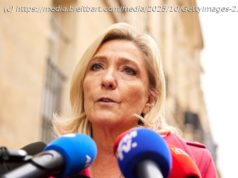On Sunday morning, President Donald Trump sent out a tweet containing video in which he pummels a person with a CNN logo as its head. The tweet was accompanied by these hashtags «#FraudNewsCNN #FNN.»
In a statement, CNN called it a «sad day when the President of the United States encourages violence against reporters.»
«Clearly, Sarah Huckabee Sanders lied when she said the President had never done so, » CNN’s statement continued. «Instead of preparing for his overseas trip, his first meeting with Vladimir Putin, dealing with North Korea and working on his health care bill, he is instead involved in juvenile behavior far below the dignity of his office. We will keep doing our jobs. He should start doing his.»
The video Trump used for the tweet came from an appearance Trump made in 2007 on the pro wresting juggernaut World Wrestling Entertainment. In the original footage, Trump clotheslines WWE CEO Vince McMahon, who is taunting «Stone Cold» Steve Austin.
The appearance was part of a short-lived «feud» between McMahon and Trump, which was billed as the «battle of the billionaires.» (In real life, the two men are very friendly. McMahon’s wife, Linda, is now a member of Trump’s Cabinet as the Small Business Administrator.)
How do I know this? Because I watched it live. Because I love pro wrestling — always have, always will.
And, because of my decades spent watching pro wrestling, I have long believed that one of the best ways to understand the Trump campaign and now the Trump presidency is through the lens of professional wrestling and, in particular, the Vince McMahon-era WWE.
Let me explain.
At the heart of pro wrestling sits this basic fact: It is fake. It is a scripted television show. Yes, it requires physical ability — no one who is not in excellent shape could perform some of the falls and bumps these wrestlers do daily. But it is, at heart, a soap opera. Scriptwriters plot character arcs and narrative building. The outcomes are known before the matches begin. The wrestlers are as much actors as they are athletes. (Look to the acting successes of Dwayne «The Rock» Johnson and John Cena for proof of that fact.)
But, and this is the really important part, not everyone who is a fan of pro wrestling knows this. Lots and lots of people who go to the shows, who buy the t-shirts and who subscribe to the WWE Network believe that this is all real. That the feuds are real expressions of dislike between the wrestlers. That «Mr. McMahon» is an evil, money-grubbing CEO. That «Bray Wyatt» is some sort of mystical southern shaman rather than just Windham Rotunda, the son of longtime pro wrestler Mike Rotunda and the grandson of «Blackjack» Mulligan. (I warned you I am a wrestling mark.)
This basic divide between fake and real is what Trump capitalizes on, too.
Anyone who has followed his career in business or politics knows that there isn’t a more attentive media consumer than Donald Trump. He watches cable TV constantly — as evidenced by the installation of a 60-plus-inch TV in his dining room near the Oval Office. (Ask yourself: If he doesn’t watch TV, as he claims, then what does he watch on that TV?) He loves this stuff. Always has. Always will. And, if and when Trump ever reaches out to you as a reporter, he is tremendously solicitous; he praises your work and says you are one of the good ones. (Trump did this to me during the campaign.)
Most people — particularly in the media — know this fact. But lots of other people, including many of Trump’s supporters, truly believe that he hates the media. That he is the fighter against «fake news» they have been waiting for their entire lives. They don’t get that Trump is playing a role, that he is doing a schtick because he knows there is political gain to be had there.
Then there is the fact that pro wrestling has long — and successfully — played to peoples’ stereotypes for eyeballs and audience intensity. When I was growing up in the 1980s, a character named the «Iron Sheik» was the biggest «heel» (a bad guy) in the wrestling world. His character was created following the Iranian hostage crisis of the early 1980s. He would enter the ring carrying an Iranian flag and bow to it before the matches. Nikolai Volkoff, who would sing the Russian national anthem in the middle of the ring, was another of the top heels of that era.
McMahon grasped early on that playing on peoples’ fears and anger was a ratings goldmine. Booing is a powerful thing. Uniting behind a common enemy has real resonance. That McMahon created cartoon villains — broad-brush sketches of what made people afraid or upset — was besides the point. That it worked was the whole point.
Trump traffics in this same sort of approach. He is a famed — by his own account — counter-puncher. He does better when there is something or someone to run against.
In the 2016 campaign, that was easy; he had «Crooked» Hillary. But, as president, Trump has struggled to find an enemy. The Republican-controlled Congress? Meh. The leaderless Democratic party? Not so much.
What he has turned to then is the media. And he has worked aggressively to paint journalists as not only biased and «fake» but also as a stand-in for the so-called «elites» Trump supporters detest. If Trump was running the WWE, he would create a wrestler who was a reporter. That character — call him Clark Can’t — would have gone to Harvard, would work for CNN or The New York Times, would wear glasses and would spend the time before each match lecturing the crowd about how they need to be more politically correct. (In truth, the character would likely be a huge success as a villain.)
There’s one crucial difference between what Vince McMahon does and what Donald Trump does, however. McMahon is the CEO of an entertainment company whose lone goal is to make money for that company. Donald Trump is the president of the United States, whose salary is paid by taxpayers and whose job is to represent a nation of 300 million people stateside and in the world community.
Домой
United States
USA — Art Why pro wresting is the perfect metaphor for Donald Trump's presidency






